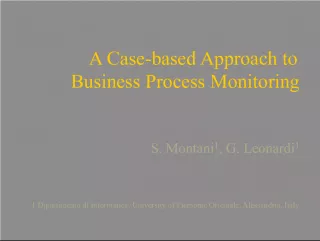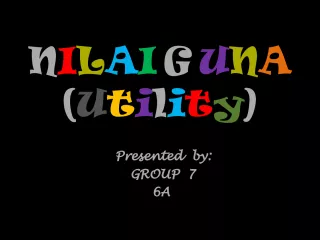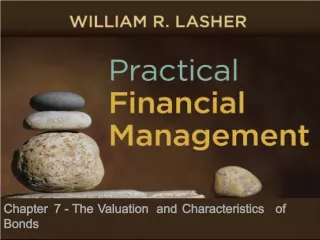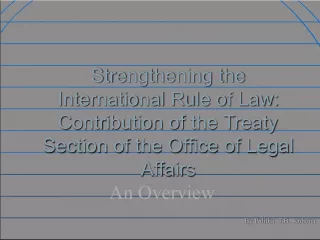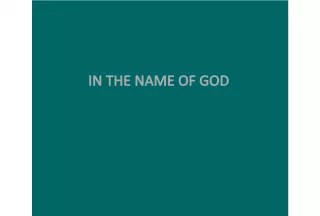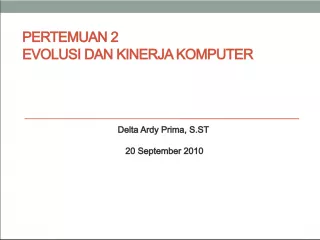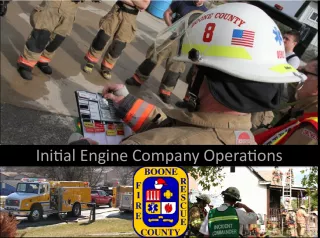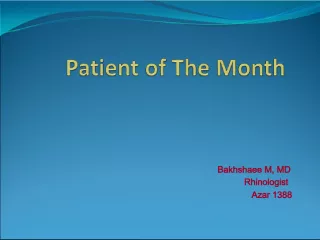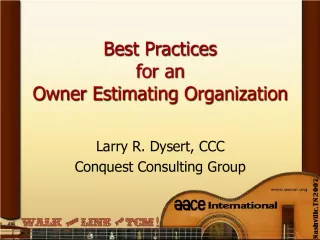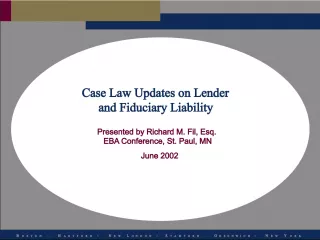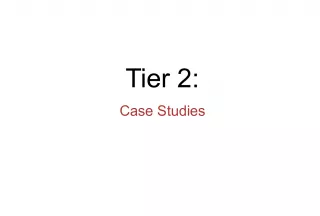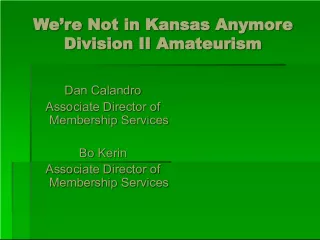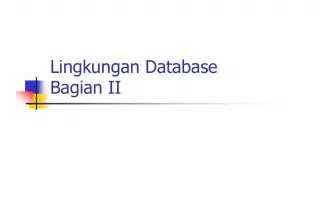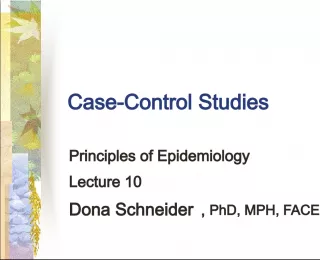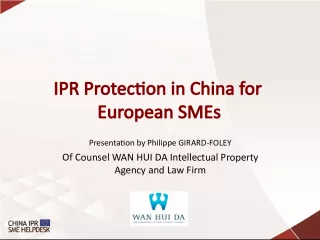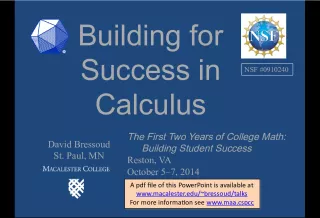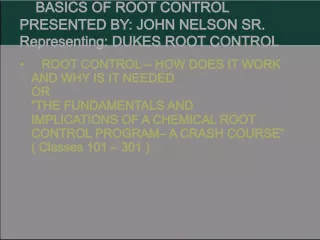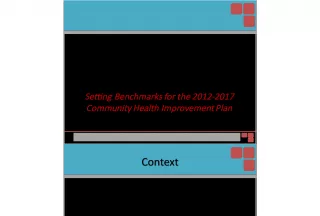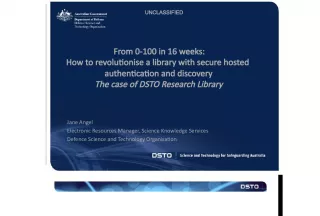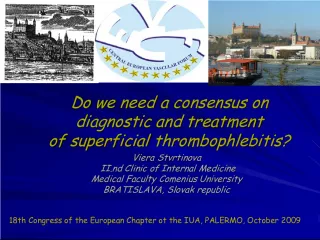The Importance of Establishing a Prima Facie Case under USC in USPTO Proceedings
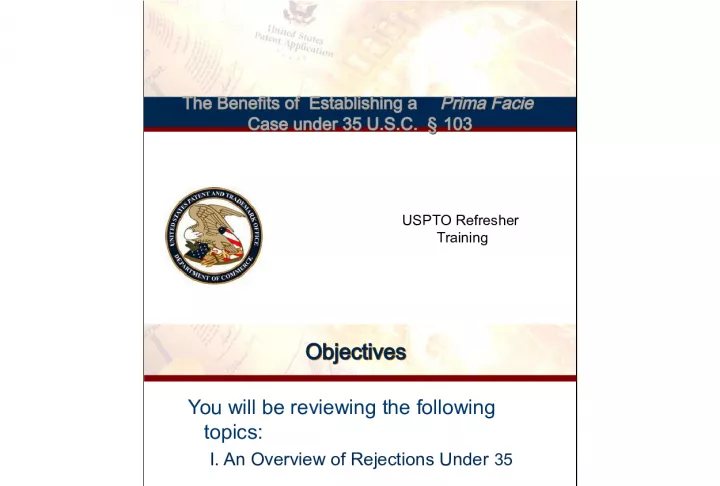

Learn how establishing a prima facie case under USC can benefit your case in USPTO proceedings. This blog post explores the advantages of meeting this burden of proof and how it can strengthen your argument.
- Uploaded on | 2 Views
-
 emilybell
emilybell
About The Importance of Establishing a Prima Facie Case under USC in USPTO Proceedings
PowerPoint presentation about 'The Importance of Establishing a Prima Facie Case under USC in USPTO Proceedings'. This presentation describes the topic on Learn how establishing a prima facie case under USC can benefit your case in USPTO proceedings. This blog post explores the advantages of meeting this burden of proof and how it can strengthen your argument.. The key topics included in this slideshow are prima facie, USC, USPTO, burden of proof, legal proceedings,. Download this presentation absolutely free.
Presentation Transcript
1. The Benefits of Establishing a Prima Facie Case under 35 U.S.C. 103 The Benefits of Establishing a Prima Facie Case under 35 U.S.C. 103 USPTO Refresher Training
2. 0802/23/2011 Refresher- 35 USC 103 Training 2 Objectives Objectives You will be reviewing the following topics: I. An Overview of Rejections Under 35 U.S.C. 103 II. The State of Rejections Under 35 U.S.C. 103 III. Benefits of Establishing an Effective Rejection under 35 U.S.C. 103
3. I. An Overview of Rejections 35 U.S.C. 103 I. An Overview of Rejections 35 U.S.C. 103
4. 0802/23/2011 Refresher- 35 USC 103 Training 4 35 U.S.C. 103 Conditions for Patentability: Non-obvious Subject Matter 35 U.S.C. 103 Conditions for Patentability: Non-obvious Subject Matter (a) A patent may not be obtained though the invention is not identically disclosed or described as set forth in section 102 of this title, if the differences between the subject matter sought to be patented and the prior art are such that the subject matter as a whole would have been obvious at the time the invention was made to a person having ordinary skill in the art to which said subject matter pertains. Patentability shall not be negatived by the manner in which the invention was made.
5. 0802/23/2011 Refresher- 35 USC 103 Training 5 35 U.S.C. 103 35 U.S.C. 103 Factors to be considered when analyzing prior art under 35 U.S.C. 103 were articulated by the Supreme Court in a 1966 decision, Graham v. John Deere Co. , 383 U.S. 1, 148 USPQ 459 (1966).
6. 0802/23/2011 Refresher- 35 USC 103 Training 6 Graham v. John Deere Inquiries Graham v. John Deere Inquiries 1. What is the scope and content of the prior art? 2. What are the differences between the prior art and the claimed invention? 3. What is the level of ordinary skill in the pertinent art at the time the invention was made? 4. Does any objective evidence of nonobviousness exist?
7. 0802/23/2011 Refresher- 35 USC 103 Training 7 Inquiry One: Determining the Scope and Content of the Prior Art Inquiry One: Determining the Scope and Content of the Prior Art Determining the scope and content of the prior art requires an understanding of what is actually disclosed by the reference as well as an understanding of the technology underlying the subject matter of the reference.
8. 0802/23/2011 Refresher- 35 USC 103 Training 8 Inquiry Two: Determining the Differences between the Prior Art and the Claimed Invention Inquiry Two: Determining the Differences between the Prior Art and the Claimed Invention Before a determination of how the claimed invention differs from the prior art can be made, there must be a clear understanding of both the claimed invention as well as of the invention disclosed by the reference. Such an understanding must be made of the claimed invention as a whole .
9. 0802/23/2011 Refresher- 35 USC 103 Training 9 Inquiry Three: Resolving the Level of Ordinary Skill in the Art at the Time of the Invention Inquiry Three: Resolving the Level of Ordinary Skill in the Art at the Time of the Invention One of ordinary skill in the art is a hypothetical person presumed to have understood the scientific and engineering principles applicable to the pertinent art when the invention was made. Specifying a particular level of skill is not necessary where the prior art itself reflects an appropriate level. Ascertaining level of ordinary skill is necessary to maintain objectivity.
10. 0802/23/2011 Refresher- 35 USC 103 Training 10 Factors to Consider in Determining the Level of Ordinary Skill Include: Factors to Consider in Determining the Level of Ordinary Skill Include: (1) The educational level of the inventor; (2) Type of problems encountered in the art; (3) Prior art solutions to those problems; (4) Rapidity with which innovations are made; (5) Sophistication of the technology; and (6) Educational level of active workers in the field.
11. 0802/23/2011 Refresher- 35 USC 103 Training 11 Making a 35 U.S.C. 103 Rejection Making a 35 U.S.C. 103 Rejection Once these factors have been considered, any rejection made must address findings of fact as to the disclosures in the references used together with a rationale for combining or modifying the references.
12. 0802/23/2011 Refresher- 35 USC 103 Training 12 Making a 35 U.S.C. 103 Rejection ( cont. ) Making a 35 U.S.C. 103 Rejection ( cont. ) A key to supporting any rejection under 35 U.S.C. 103 is the clear articulation of the appropriate findings of fact and reasons why the claimed invention would have been obvious.
13. 0802/23/2011 Refresher- 35 USC 103 Training 13 Articulate the Appropriate Findings of Fact Articulate the Appropriate Findings of Fact As a review: The finding of facts relate to what one of ordinary skill in the art would have known at the time the invention was made. The source of findings of fact may be patents, non-patent literature, applicants admission of prior art, general knowledge of those in the art, or common sense.
14. II. The State of Rejections Under 35 U.S.C. 103 II. The State of Rejections Under 35 U.S.C. 103 View Points of the Examiner and the Applicant View Points of the Examiner and the Applicant
15. 0802/23/2011 Refresher- 35 USC 103 Training 15 What Applicant Would like to See Included in a More Detailed Office Action What Applicant Would like to See Included in a More Detailed Office Action Claim elements mapped to specific disclosures in the prior art. All elements addressed . The technology underlying both the claimed invention and that of the prior art understood . Determination of what is actually disclosed by the prior art. Response to technical arguments made in Applicants reply to art rejections. Early identification of patentable subject matter A detailed explanation provided by the Examiner regarding the combination used in the rejection. Reasonable rationales to combine provided.
16. 0802/23/2011 Refresher- 35 USC 103 Training 16 Some Examiners Reasoning for Why a More Detailed Office Action is not Beneficial Some Examiners Reasoning for Why a More Detailed Office Action is not Beneficial It takes more time to write. It will cause more arguments from Applicants. The Applicant should be able to read the reference and determine whats disclosed. More detail can be added to the rejection in a later Office Action.
17. 0802/23/2011 Refresher- 35 USC 103 Training 17 Reconciling Both Points of View Reconciling Both Points of View Providing a more detailed rejection in the FAOM Will pay off in time saved responding to Applicants reply; and Will advance prosecution so that it will be easier and quicker to reach a final disposition. Additional arguments from Applicant generated by a more detailed rejection Can usually be responded to based on information in the rejection itself, if the Office Action is complete, Can be more easily responded to with well reasoned and pertinent technical arguments. May provide the basis for finding allowable subject matter.
18. 0802/23/2011 Refresher- 35 USC 103 Training 18 More Reconciliation Points of View More Reconciliation Points of View While the Applicant is required to read the reference, the more open to interpretation disclosures in the reference are: the more room there is to misunderstand how the reference is applied in the rejection; and the more arguments that can be generated by Applicant. More detail can be included in a later action But this will result in more rework for little credit; And will delay reaching final disposition.
19. III . The Benefits of Establishing a Prima Facie Case under 35 U.S.C. 103 III . The Benefits of Establishing a Prima Facie Case under 35 U.S.C. 103 Mapping Claim Elements to Specific Disclosures in the Prior Art Mapping Claim Elements to Specific Disclosures in the Prior Art
20. 0802/23/2011 Refresher- 35 USC 103 Training 20 Rationale to Combine: Inquiries in Graham v. John Deere Must be Addressed to Determine Obviousness Rationale to Combine: Inquiries in Graham v. John Deere Must be Addressed to Determine Obviousness In a recent decision, the Supreme Court affirmed that the framework set forth in Graham v. John Deere continues to define the inquiries that should be addressed in determining obviousness under 35 U.S.C. 103. KSR Intl Co. v. Teleflex Inc. 550 U.S. 398, 82 USPQ2d 1385, 127 S. Ct. 1727 ( KSR ) .
21. 0802/23/2011 Refresher- 35 USC 103 Training 21 Establishing a Prima Facie Case of Obviousness Rationale to Combine Establishing a Prima Facie Case of Obviousness Rationale to Combine The key to supporting any rejection under 35 U.S.C. 103 is the clear articulation of the rationale or reason(s) why the claimed invention would have been obvious. Mere conclusory statements are not adequate to support a 35 U.S.C. 103 rejection. (T)here must be some articulated reasoning with some rational underpinning to support the legal conclusion of obviousness. In re Kahn , 78 USPQ2d 1329, 1336 (Fed. Cir. 2006); 441 F.3d 977, 988.
22. 0802/23/2011 Refresher- 35 USC 103 Training 22 Rationale for Combining Prior Art Rationale for Combining Prior Art The rationale may come expressly from the documentary prior art: An explicit statement providing a reason to combine may come from anywhere in the references used . Often, the background or summary of invention in the references being relied upon provides a sound reason for the combination. The rationale may come from a reference that is relied upon solely for providing the reason to combine.
23. 0802/23/2011 Refresher- 35 USC 103 Training 23 Rationale for Combining Prior Art ( cont. ) Rationale for Combining Prior Art ( cont. ) The rationale may be implicitly contained in the prior art. Rationale may also come from knowledge available to those of ordinary skill in the art. Common sense teaches, however, that familiar items may have obvious uses beyond their primary purposes, and in many cases a person of ordinary skill will be able to fit the teachings of multiple patents together like pieces of a puzzle. KSR Intl Co. v. Teleflex Inc., 550 U.S. 398, 420; 82 USPQ2d 1385, 1390; 127 S. Ct. 1727, 1742 ( KSR ) .
24. 0802/23/2011 Refresher- 35 USC 103 Training 24 Guidelines for applying some of the rationales presented in the KSR decision are summarized in the following slides. Examiners should note that this is not an exhaustive list of rationales which may be used when establishing a prima facie case of obviousness under 35 U.S.C. 103. Explaining Rationales to Combine Explaining Rationales to Combine
25. 0802/23/2011 Refresher- 35 USC 103 Training 25 KSR Rationales to Combine KSR Rationales to Combine Rationale A. Combining prior art elements according to known methods to yield predictable results. Rationale B. Simple substitution of one known, equivalent element for another to obtain predictable results Rationale C. Use of known technique to improve similar devices (methods, or products) in the same way Rationale D. Applying a known technique to a known device (method, or product) ready for improvement to yield predictable results. Rationale E. Obvious to try choosing from a finite number of predictable solutions. Rationale F. Known work in one field of endeavor may prompt variations of it for use in either the same field or a different one based on design incentives or other market forces if the variations would have been predictable to one of ordinary skill in the art. Rationale G. Teaching, Suggestion, or Motivation (TSM) Test
26. 0802/23/2011 Refresher- 35 USC 103 Training 26 KSR Rationales to Combine KSR Rationales to Combine Also see Examination Guidelines Update: Developments in the Obviousness Inquiry after KSR v. Teleflex ( Red Reg. citation: 75 Fed. Reg. 53643 Sept. 1, 2010) available at http://edocket.access.gpo.gov/2010/pdf/2010- 21646.pdf
27. 0802/23/2011 Refresher- 35 USC 103 Training 27 The Steps of Setting up a 35 USC 103 Rejection The Steps of Setting up a 35 USC 103 Rejection What does the prior teach? Describe what each teaches separately. (What does Reference A teach? What does Reference B teach?) What is/are the difference(s) in the claim over the applied reference(s)? ( The difference between the instant claims and the prior art is that Reference A does not teach...) What is the modification of the applied reference(s) to arrive at the claimed subject matter; and Why would the modification have been obvious to one of ordinary skill in the art at the time the invention was made?
28. 0802/23/2011 Refresher- 35 USC 103 Training 28 Presume the following claims and characters are a part of an application being examined . Remember, the more one-on-one correspondence provided, the easier it is for you to show where all the limitations are taught and for Applicant to respond . Presume the following claims and characters are a part of an application being examined . Remember, the more one-on-one correspondence provided, the easier it is for you to show where all the limitations are taught and for Applicant to respond . Example
29. 0802/23/2011 Refresher- 35 USC 103 Training 29 The Claimed Invention The Claimed Invention Claim 1. A multi-purpose clip comprising the combination of: a one-piece body member of depending tear-drop configuration having an upper terminus shaped to replicate one of a plurality of configurations selected from cartoon characters or historical characters; and an inner set, continuous, curvilinear slot congruent to the shape of said depending body member thereby forming a depending tongue portion; wherein the material of construction of said clip being such that said tongue portion may be displaced from the plane of the surrounding depending body member to thereby form a recess in a releasable friction fit relationship.
30. 0802/23/2011 Refresher- 35 USC 103 Training 30 Figures of Application Corresponding to Claim 1 Figures of Application Corresponding to Claim 1
31. 0802/23/2011 Refresher- 35 USC 103 Training 31 Prior Art Prior Art Reference A discloses a multipurpose clip which can be used as a tag or bookmark (col. 2, lines 41-42) comprising a one- piece body member element 10 of Fig. 3 of a depending tear- drop shape having an upper terminus or end point. The one- piece body member can be made of cardboard or plastic (col. 1, lines 36-39) . Fig. 3 also shows an inner set, continuous, curvilinear slot 13 congruent to the shape of the depending body member element 10 forming a tongue portion 14 . The clip has at its upper end apertures 11 and 12 connected by slot 13 (col. 1, lines 43-45). In one embodiment , the tongue 14 of badge (body member element) 10 is placed behind the page of book 30 while the body member element 10 is placed in front of the page (col. 2, lines 41-45) . The tongue 14 of the clip is made of material that may be displaced from the plane of the surrounding depending body member to form a recess in a releasable friction fit relationship (see col. 1, lines 5-11) .
32. 0802/23/2011 Refresher- 35 USC 103 Training 32 Prior Art ( cont. ) Prior Art ( cont. ) Reference A
33. 0802/23/2011 Refresher- 35 USC 103 Training 33 Prior Art ( cont. ): Prior Art ( cont. ): Reference B discloses a bookmark comprising a body member that has a body portion 5 and an handle part 8 that is capable of being inserted between the inner edges of the pages 12 and the back of the binding of the book 11 , and flexible members 6 and 7 where the body portion can be in any form and appearance (lines 4-10, 11-15, and 25-27) including the silhouette of a well known character or another representation of persons, animals, birds, flowers, or various tokens emblems, advertisements, etc. according to the desire of the manufacturer (lines 56-61) . The body portion may be made of any suitable material including rigid or pliable material such as: metal, fabricated material, wood, celluloid, etc. (lines 39-41).
34. 0802/23/2011 Refresher- 35 USC 103 Training 34 Prior Art ( cont. ): Prior Art ( cont. ): Reference B
35. 0802/23/2011 Refresher- 35 USC 103 Training 35 Rejection 1 ( cont. ) Rejection 1 ( cont. ) Lets determine if these references are analogous art. Reference As article is labeled as a clip and Reference Bs article is labeled as a bookmark. Would one of ordinary skill on the art consider these articles to be Analogous Art? Yes, Reference A states that the article can be used as a bookmark. (col. 2, lines 41-42) Furthermore, even if use as a bookmark was not specifically mentioned a clip could inherently act as a bookmark to mark a page .
36. 0802/23/2011 Refresher- 35 USC 103 Training 36 Rejection 1 Rejection 1 Claim 1 is rejected as being unpatentable under 35 U.S.C. 103(a) over Reference A in view of Reference B . Reference A teaches a multi-purpose clip comprising the combination of: a one-piece body member of depending tear-drop configuration having an upper terminus, see Figures 1-7; an inner set, continuous, curvilinear slot congruent to the shape of said depending body member thereby forming a depending tongue portion, wherein the material of construction of said clip being such that tongue-like portion may be displaced from the plane of the surrounding depending body member to thereby form a recess in a releasable friction fit relationship, see column 1, lines 5-11.
37. 0802/23/2011 Refresher- 35 USC 103 Training 37 Rejection 1 ( cont. ) Rejection 1 ( cont. ) Reference A differs from Claim 1 in that it fails to disclose an upper terminus shaped to replicate one of a plurality of configurations selected from cartoon characters or historical characters. However, Reference B discloses an upper terminus (indicator portion or handle portion) shaped to replicate a well known character, see lines 65-69.
38. 0802/23/2011 Refresher- 35 USC 103 Training 38 Rejection 1 ( cont. ) Rejection 1 ( cont. ) Therefore, it would have been obvious to one of ordinary skill in the art (POSITA) to have an upper terminus shaped to replicate one of a plurality of configurations selected from cartoon or historical characters because the handle portion may be of any suitable form at the option of the owner.
39. 0802/23/2011 Refresher- 35 USC 103 Training 39 Rejection 1 ( cont. ) Rejection 1 ( cont. ) Has a prima facie case of obviousness been set forth in the rejection? Lets discuss this:
40. 0802/23/2011 Refresher- 35 USC 103 Training 40 Mapping Claim Elements to Specific Disclosures in the Prior Art Mapping Claim Elements to Specific Disclosures in the Prior Art Remember: A finding of facts to support a rejection under 35 U.S.C. 103 may be found in both the written text and figures. If it is clear how specific elements disclosed in figures or text meet specific claim elements, then a simple referral to figures and text is sufficient. However, if it is not clear how the elements of the reference would meet the claimed limitations then some explanation will be required.
41. 0802/23/2011 Refresher- 35 USC 103 Training 41 Mapping Claim Elements to Specific Disclosures in the Prior Art Mapping Claim Elements to Specific Disclosures in the Prior Art If we look back at the rejection, you should notice that there are a number of limitations that have not been specifically addressed or mapped. What about the motivational statement? Is that proper?
42. 0802/23/2011 Refresher- 35 USC 103 Training 42 Minimal Mapping between the Claim Limitations and the Prior Art Minimal Mapping between the Claim Limitations and the Prior Art So, the rejection made in the Example 1 is not considered to be acceptable since there is no prima facie case of obviousness as the obviousness statement is merely conclusory. There are column and lines and figures mentioned, but they are not mapped to the prior art. Also, have all claimed limitations been addressed? The Applicant would most likely have many questions/arguments when reading this rejection. For instance:
43. 0802/23/2011 Refresher- 35 USC 103 Training 43 Minimal Mapping between the Claim Limitations and the Prior Art ( cont. ) Minimal Mapping between the Claim Limitations and the Prior Art ( cont. ) Some of the questions/arguments may result from: The rejection not showing or addressing: Where the multipurpose clip is taught; there is a question as to whether is it really taught by the reference and/or whether the Examiner is just copying the instant claim. However, it is taught at col. 2, lines 41-42 in Reference A ; How the claim language of one of a plurality of configurations selected from cartoon characters or historical characters is taught. The limitation is taught by Reference B at lines 56-61;
44. 0802/23/2011 Refresher- 35 USC 103 Training 44 Minimal Mapping between the Claim Limitations and the Prior Art ( cont. ) Minimal Mapping between the Claim Limitations and the Prior Art ( cont. ) Some of the questions/arguments may result from (c ont. ): The rejection not showing or addressing: Where the inner set, continuous, curvilinear slot congruent to the shape of said depending body member thereby forming a depending tongue portion is taught; again, there is a question as to whether is it really taught by the reference and is the Examiner just copying the instant claim. Again, the limitation is taught at- Fig. 3, elements 10, 13 and 14 of Reference A ; and Which specific figure teaches the closest embodiment to the instant claim- Fig. 3 of Reference A .
45. 0802/23/2011 Refresher- 35 USC 103 Training 45 Rejection 2 Rejection 2 Claim 1 is rejected as being unpatentable under 35 U.S.C. 103(a) over Reference A in view of Reference B . Reference A discloses a multipurpose clip comprising: a one piece body member 10 of a depending tear- drop configuration having an upper terminus or end point, see Fig. 3 ; Fig. 3 also shows an inner set, continuous, curvilinear slot 13 congruent to the shape of the depending body member 10 forming a tongue portion 14 . Also see col. 2, lines 41-45, which discloses that in one embodiment, the tongue 14 of tag 10 is placed behind the page of book 30 while the body clip 10 is placed in front of the page.
46. 0802/23/2011 Refresher- 35 USC 103 Training 46 Rejection 2 ( cont. ) Rejection 2 ( cont. ) The examiner asserts that in order for the page to be placed between tab 14 and body 10, the material of construction of clip 10 must be such that tongue 14 may be displaced from the plane of the surrounding depending body member to thereby form a recess in a releasable friction fit relationship. Reference A differs from Claim 1 in that it fails to disclose an upper terminus shaped to replicate one of a plurality of configurations selected from cartoon characters or historical characters. However, Reference B discloses an upper terminus 8 (indicator portion or handle portion) shaped to replicate a well known character, see lines 65-69.
47. 0802/23/2011 Refresher- 35 USC 103 Training 47 Rejection 2 ( cont. ) Rejection 2 ( cont. ) Therefore, it would have been obvious to POSITA to have an upper terminus shaped to replicate one of a plurality of configurations selected from cartoon or historical characters because the handle portion may be of any suitable form at the option of the owner.
48. 0802/23/2011 Refresher- 35 USC 103 Training 48 Minimal One-on-One Correspondence between the Claim Limitations and the Prior Art Minimal One-on-One Correspondence between the Claim Limitations and the Prior Art This rejection is a little better than Example 1, with a little more limitation mapping. However, have all the claim limitations not addressed in Rejection 1 been addressed in Rejection 2? Also, has a prima facie case of obviousness been set forth? Lets look at Rejection 2 more closely:
49. 0802/23/2011 Refresher- 35 USC 103 Training 49 Minimal One-on-One Correspondence between the Claim Limitations and the Prior Art Minimal One-on-One Correspondence between the Claim Limitations and the Prior Art Notice that in Rejection 2: The preamble language of a multipurpose clip- Claim 1: A multi-purpose clip comprising the combination of... still has not been addressed; How the preamble language of one of a plurality of configurations selected from cartoon characters or historical characters is taught, but no real explanation of how Reference A is modified is discussed. The limitation is taught by Reference B at lines 56- 61.
50. 0802/23/2011 Refresher- 35 USC 103 Training 50 Minimal One-on-One Correspondence between the Claim Limitations and the Prior Art Minimal One-on-One Correspondence between the Claim Limitations and the Prior Art Notice that in Rejection 2 ( cont. ): Where the inner set, continuous, curvilinear slot congruent to the shape of said depending body member thereby forming a depending tongue portion is taught in Reference A has been set forth, thereby eliminating any questions as to whether it is really taught by the reference and/or whether the Examiner is just copying the instant claim. Again, the limitation is taught at Fig. 3, elements 10, 13 and 14 ; and The specific figure in Reference A that teaches the closest embodiment to the instant claim has been listed- Fig. 3.
51. 0802/23/2011 Refresher- 35 USC 103 Training 51 Applicants Reply to Rejection 2 Applicants Reply to Rejection 2 So, since the Office action has not addressed all the claim limitations then a prima facie case of obviousness has not been proven. The burden has not been shifted and the Applicant will most likely argue that the Office action does not show or teach these limitations and request issuance of the patent. Again, the motivational statement is merely conclusory, and therefore, there is still no prima facie case of obviousness set forth. For instance, one argument Applicant will most likely present is:
52. 0802/23/2011 Refresher- 35 USC 103 Training 52 Applicants Reply to Rejection 2 ( cont. ) Applicants Reply to Rejection 2 ( cont. ) ...that the combination of Reference A in view of Reference B fails to set forth a prima facie case of obviousness as the combination does not disclose each and every element of the claimed invention. Particularly, it fails to disclose that the clip of Reference A is multipurpose . Applicant argues that each badge disclosed by Reference A appears to have only a single purpose disclosed.
53. 0802/23/2011 Refresher- 35 USC 103 Training 53 Examiners Response to Applicants Arguments to Rejection 2 Examiners Response to Applicants Arguments to Rejection 2 Instead of explicitly stating where in Reference A the multipurpose limitation is taught, the Examiner provides the following: 7.37.10 Unpersuasive Argument: Limitation(s) in Preamble In response to applicants arguments, the recitation of a multipurpose clip has not been given patentable weight because the recitation occurs in the preamble. A preamble is generally not accorded any patentable weight where it merely recites the purpose of a process or the intended use of a structure, and where the body of the claim does not depend on the preamble for completeness but, instead, the process steps or structural limitations are able to stand alone. See In re Hirao , 535 F.2d 67, 190 USPQ 15 (CCPA 1976) and Kropa v. Robie , 187 F.2d 150, 152, 88 USPQ 478, 481 (CCPA 1951)
54. 0802/23/2011 Refresher- 35 USC 103 Training 54 Understanding the Underlying Technology of both the Claimed Invention and Prior Art Understanding the Underlying Technology of both the Claimed Invention and Prior Art Remember, it is important to understand the technology underlying both the claimed invention and the prior art in order to: (1) determine if disclosures in the references meet the limitations recited in the claim and (2) fully respond to any technical arguments presented by Applicant by referring to the references for support.
55. 0802/23/2011 Refresher- 35 USC 103 Training 55 What the Examiner Should Have Done in the First Action on the Merits (FAOM) What the Examiner Should Have Done in the First Action on the Merits (FAOM) It is best to address all claim elements in the FAOM. The following text could have been included as part of the original rejection to address the multipurpose limitation: Reference A discloses that clip 10 has a multiplicity of uses, see col. 1, lines 1-5. In addition to being a badge, clip 10 may be used as a bookmark, see col. 2, lines 41-45.
56. 0802/23/2011 Refresher- 35 USC 103 Training 56 What the Examiner Should Have Done in the First Action on the Merits (FAOM) ( cont. ) What the Examiner Should Have Done in the First Action on the Merits (FAOM) ( cont. ) If the rejection of Claim 1 in the FAOM had addressed the limitation of a multipurpose clip, then Applicants arguments, might not have been made, or the examiner would have only had to refer to where the limitation was taught in the Office Action.
57. 0802/23/2011 Refresher- 35 USC 103 Training 57 What the Examiner Should Have Done in the First Action on the Merits (FAOM) ( cont. ) What the Examiner Should Have Done in the First Action on the Merits (FAOM) ( cont. ) Again, notice that Rejection 2 does not specifically address how the applied references teach the claim language of a one of a plurality of configurations selected from cartoon characters or historical characters . Claim 1: A multi-purpose clip comprising the combination of: a one-piece body member of depending tear-drop configuration having an upper terminus shaped to replicate one of a plurality of configurations selected from cartoon characters or historical characters...
58. 0802/23/2011 Refresher- 35 USC 103 Training 58 Applicants Reply to Rejection 2 ( cont. ) Applicants Reply to Rejection 2 ( cont. ) An additional argument set forth by Applicant is that: because the upper terminus of Reference A is a flat line, it would not have been possible to shape the line in such a manner that one of a plurality of configurations selected from cartoon characters or historical characters would have been produced.
59. 0802/23/2011 Refresher- 35 USC 103 Training 59 Applicants Reply to Rejection 2 ( cont. ) Applicants Reply to Rejection 2 ( cont. ) Applicant further argues that Reference B discloses an upper terminus (body portion) in the shape of a well known character, and that while well known characters may include historical characters, the phrase also covers current characters which are simply well known but are not historical . Thus, the cited combination fails to present a prima facie case of obviousness as the upper terminus cannot be shaped to produce a historical or cartoon character.
60. 0802/23/2011 Refresher- 35 USC 103 Training 60 Examiners Response to Applicants Arguments to Rejection 2 ( cont. ) Examiners Response to Applicants Arguments to Rejection 2 ( cont. ) Instead of explicitly stating how Reference A would have been modified to show how one of a plurality of configurations selected from cartoon characters or historical characters is taught, the Examiner provides the following: 7.37.13 Unpersuasive Argument: Arguing Against References Individually In response to applicants arguments against the references individually, one cannot show nonobviousness by attacking references individually where the rejections are based on combinations of references. See In re Keller , 642 F.2d 413, 208 USPQ 871 (CCPA 1981); In re Merck & Co., 800 F.2d 1091, 231 USPQ 375 (Fed. Cir. 1986)
61. 0802/23/2011 Refresher- 35 USC 103 Training 61 Examiners Response to Applicants Arguments to Rejection 2 ( cont. ) Examiners Response to Applicants Arguments to Rejection 2 ( cont. ) The examiner further responded that as noted in MPEP 2144.04(I), matters relating to ornamentation only, which have no function, cannot be relied upon to patentably distinguish the claimed invention from the prior art. Think about: Is this response complete enough? If not, what should the Examiner have set forth?
62. 0802/23/2011 Refresher- 35 USC 103 Training 62 Better to Base the Rejection on What is Actually Disclosed by the Reference Better to Base the Rejection on What is Actually Disclosed by the Reference Again, if the examiner had a clear understanding of what Reference B actually discloses, the rejection in the FAOM could have been changed to argue the obviousness of modifying Reference A to specifically state that a historical character is a common type of a well known character instead of referring the reader to the disclosure of just a well known character. This, most likely, would have avoided Applicants argument.
63. 0802/23/2011 Refresher- 35 USC 103 Training 63 What the Examiner Should Have Done in the First Action on the Merits (FAOM) ( cont. ) What the Examiner Should Have Done in the First Action on the Merits (FAOM) ( cont. ) The examiner should have relied on the facts in the applied prior art instead of taking the easy way out of just using form paragraphs without explanation and could have set forth something like the following in the rejection in the FAOM: The examiner notes that the material disclosed by Reference A to form clip 10 is plastic, see col. 1, lines 36-42 . One of ordinary skill in the art at the time of the would appreciate that plastics, once melted, can be shaped into any desired pattern. The indicator or handle portion 8 of Reference B may be of any suitable form such as a silhouette of a well known character or may take the form of or representation of persons, animals, birds or flowers, or various tokens, emblems, advertisements and the like at the option of the owner.
64. 0802/23/2011 Refresher- 35 USC 103 Training 64 What the Examiner Should Have Done in the First Action on the Merits (FAOM) ( cont. ) What the Examiner Should Have Done in the First Action on the Merits (FAOM) ( cont. ) Therefore, it would have been obvious to POSITA at the time the invention was made to shape the upper terminus in any suitable form or shape such as a flat line as disclosed by Reference A or the shape of a well known character as disclosed in Reference B because Reference B teaches that the various shapes are functional equivalents, does not make a distinction between any of the shapes, and states that the body portion can be in any form and appearance, see lines 4-10, 11-15, and 25-27, according to the desire of the manufacturer, see lines 56-61.
65. 0802/23/2011 Refresher- 35 USC 103 Training 65 What the Examiner Should Have Done in the First Action on the Merits (FAOM) ( cont. ) What the Examiner Should Have Done in the First Action on the Merits (FAOM) ( cont. ) The examiner further asserts that: Substitution of a historical character for the well known character disclosed in Reference B amounts to little more than s imple substitution of one known equivalent element for another. The result of this substitution would have been the predictable display of a historical character as the shape of the upper terminus of modified clip 10 of Reference A instead of a well known character.
66. 0802/23/2011 Refresher- 35 USC 103 Training 66 Providing a Detailed Explanation of the Combination Used in the Rejection Providing a Detailed Explanation of the Combination Used in the Rejection If the rejection of Claim 1 had included a more detailed explanation of the combination, then Applicants arguments: might not have been made, or the examiner would only have to refer to the Office Action for details of a technical response.
67. 0802/23/2011 Refresher- 35 USC 103 Training 67 An Example of a First Action on the Merits of the Clip Example An Example of a First Action on the Merits of the Clip Example So after all this analysis, what should a FAOM of the Clip Example look like? This is just one example.
68. 0802/23/2011 Refresher- 35 USC 103 Training 68 What the Overall Rejection Should Look Like What the Overall Rejection Should Look Like Claim 1 is rejected as being unpatentable under 35 U.S.C. 103(a) over Reference A in view of Reference B . Reference A discloses a multipurpose clip comprising: a one piece body member 10 of a depending tear- drop configuration having an upper terminus or end point, see Fig. 3. Fig. 3 also shows an inner set, continuous, curvilinear slot 13 congruent to the shape of the depending body member 10 forming a tongue portion 14. Reference A further discloses that in one embodiment, the tongue 14 of badge 10 is placed behind the page of book 30 while the body clip 10 is placed in front of the page, see col. 2, lines 41-45.
69. 0802/23/2011 Refresher- 35 USC 103 Training 69 What the Overall Rejection Should Look Like ( cont. ) What the Overall Rejection Should Look Like ( cont. ) The examiner asserts that in order for the page to be placed between tab 14 and body 10, the material of construction of clip 10 must be such that tongue 14 may be displaced from the plane of the surrounding depending body member to thereby form a recess in a releasable friction fit relationship . Reference A also discloses that clip 10 has a multiplicity of uses, see col. 1, lines 1-5. In addition to being a badge, clip 10 may be used as a bookmark, see col. 2, lines 41-45 . The examiner notes that the material disclosed by Reference A further discloses that the clip 10 is formed of plastic, see col. 1, lines 36-42. Once melted, plastics can be shaped into any desired pattern .
70. 0802/23/2011 Refresher- 35 USC 103 Training 70 What the Overall Rejection Should Look Like ( cont. ) What the Overall Rejection Should Look Like ( cont. ) Reference A differs from Claim 1 in that it fails to disclose an upper terminus shaped to replicate one of a plurality of configurations selected from cartoon characters or historical characters . However, Reference B discloses an upper terminus 8 (indicator portion or handle portion) shaped to replicate a well known character, see lines 65-69 . Reference B also discloses that the indicator or handle portion 8 may be of any suitable form such as a silhouette of a well known character or may take the form of or representation of persons, animals, birds or flowers, or various tokens, emblems, advertisements and the like at the option of the owner, see lines 39-41 .
71. 0802/23/2011 Refresher- 35 USC 103 Training 71 What the Overall Rejection Should Look Like ( cont. ) What the Overall Rejection Should Look Like ( cont. ) Reference A and Reference B appear to be analogous art as Reference A states that the article can be used as a bookmark, see col. 2, lines 41-42. Furthermore, even if Reference A did not explicitly state that the article could be used as a bookmark, a clip could inherently act as a bookmark to mark a page.
72. 0802/23/2011 Refresher- 35 USC 103 Training 72 What the Overall Rejection Should Look Like ( cont. ) What the Overall Rejection Should Look Like ( cont. ) Substitution of a historical character for the well known character disclosed in Reference B appears to be a s imple substitution of one known equivalent element for another. The result of this substitution would have been the predictable display of a historical character as the shape of the upper terminus of modified clip 10 of Reference A instead of a well known character. In addition, matters relating to ornamentation only, which have no function, cannot be relied upon to patentably distinguish the claimed invention from the prior art.
73. 0802/23/2011 Refresher- 35 USC 103 Training 73 What the Overall Rejection Should Look Like ( cont. ) What the Overall Rejection Should Look Like ( cont. ) Furthermore, Reference A teaches that the clip 10 is formed from plastic, see col. 1, lines 36-42. Once melted, plastics can be shaped in any desired form or shape.
74. 0802/23/2011 Refresher- 35 USC 103 Training 74 What the Overall Rejection Should Look Like ( cont. ) What the Overall Rejection Should Look Like ( cont. ) Therefore, it would have been obvious to a person of ordinary skill in the art at the time the invention was made to shape the upper plastic terminus of Reference A in any suitable form or shape including cartoon or historical characters because Reference B teaches a silhouette of well known or historical characters as well as other forms including: other persons, animals, birds, flowers, various tokens, emblems, advertisements and the like could have been made and would have been at the option of the owner.
75. 02/23/2011 Refresher- 35 USC 103 Training 75 What the Overall Rejection Should Look Like ( cont. ) What the Overall Rejection Should Look Like ( cont. ) Furthermore, it would have been well known to one of skill in the art that plastic can be formed into any desired form or shape making the likelihood of success of forming the bookmark of Reference A into any desired form or shape, including cartoon and historical characters, very high .
76. 0802/23/2011 Refresher- 35 USC 103 Training 76 Summary Summary You should now be more familiar with: The Overview of Rejections Under 35 U.S.C. 103 The State of Rejections Under 35 U.S.C. 103 Benefits of Establishing an Effective Rejection under 35 U.S.C. 103
77. 0802/23/2011 Refresher- 35 USC 103 Training 77 Questions?
